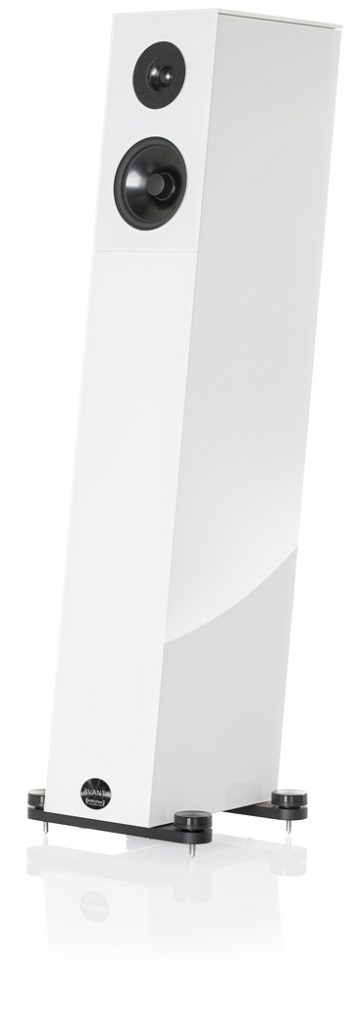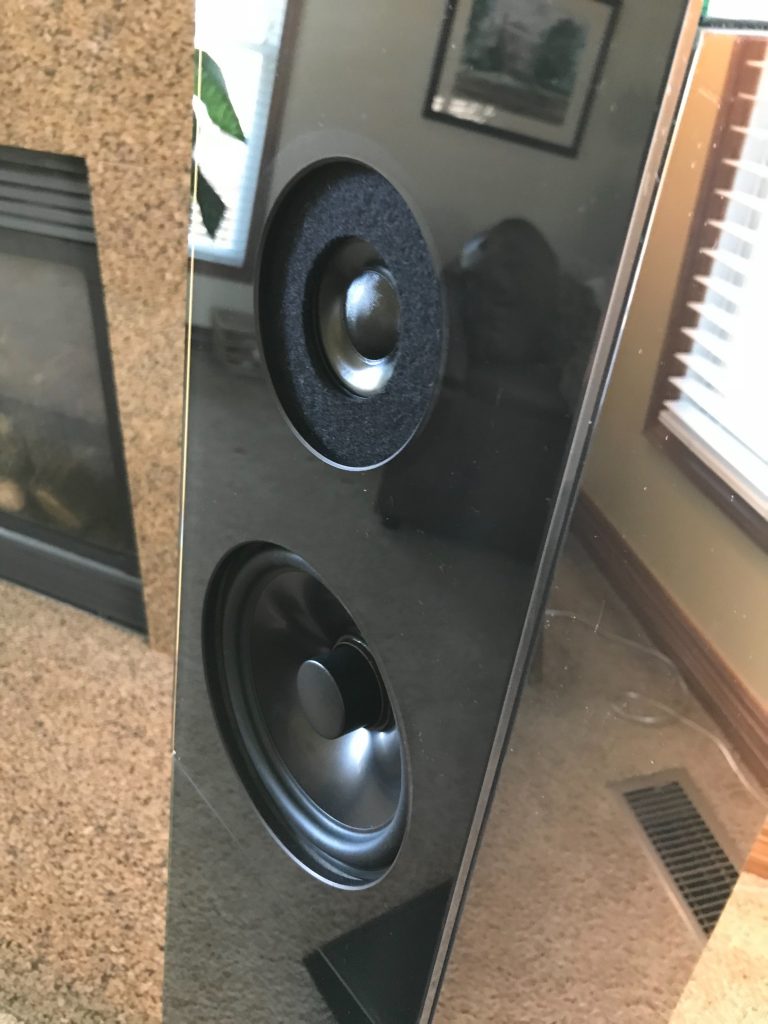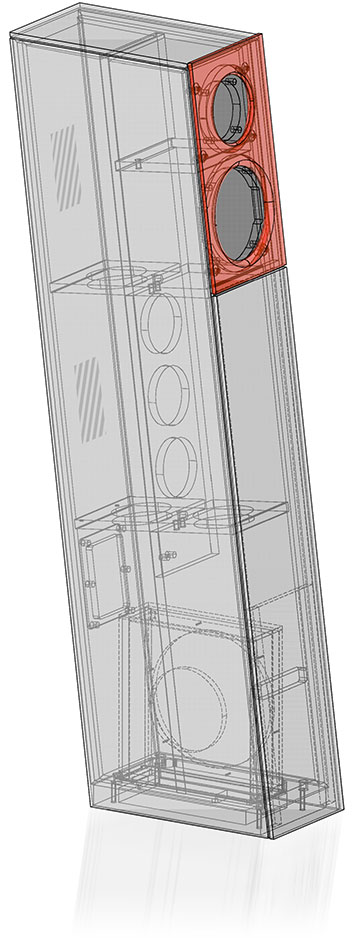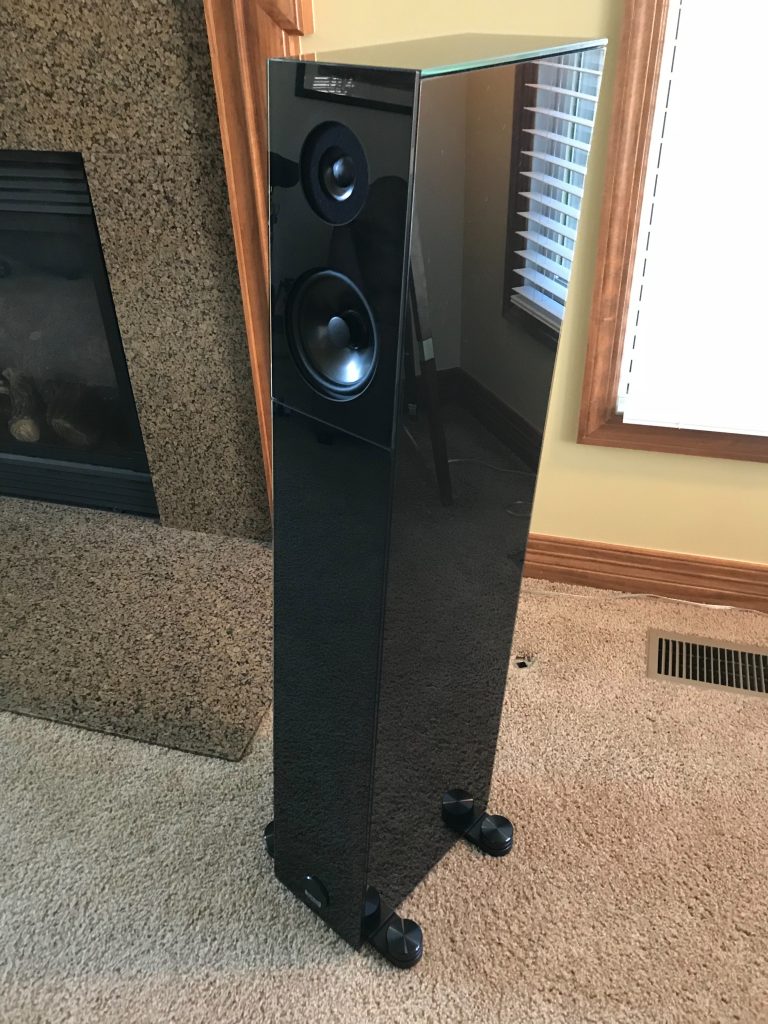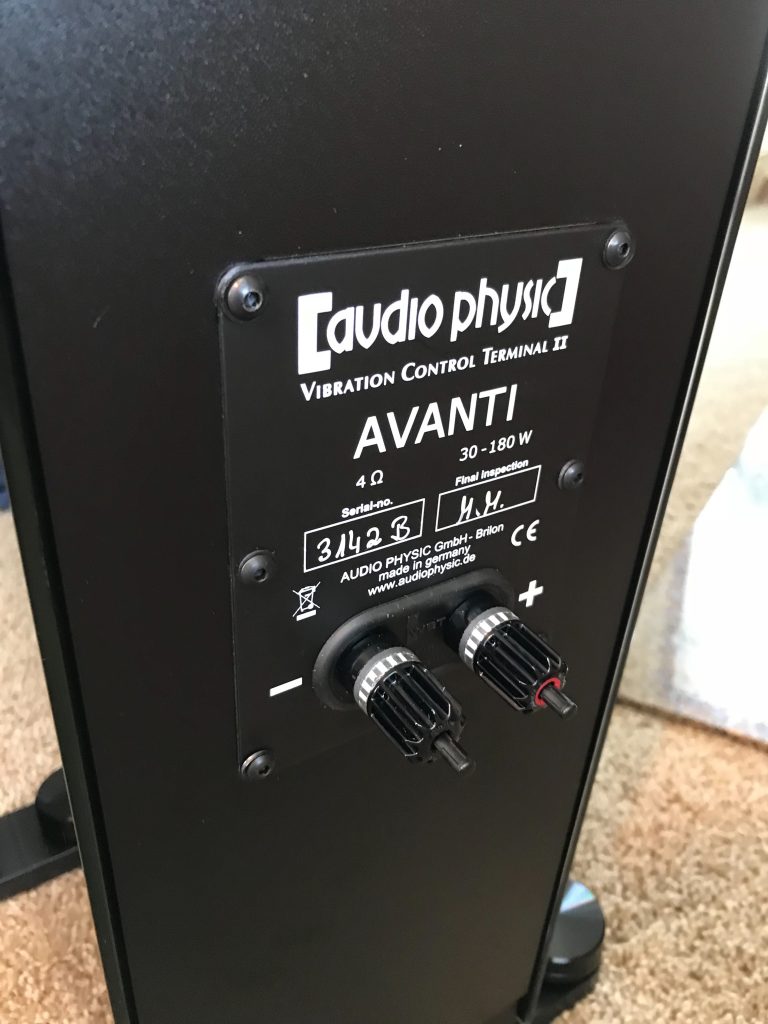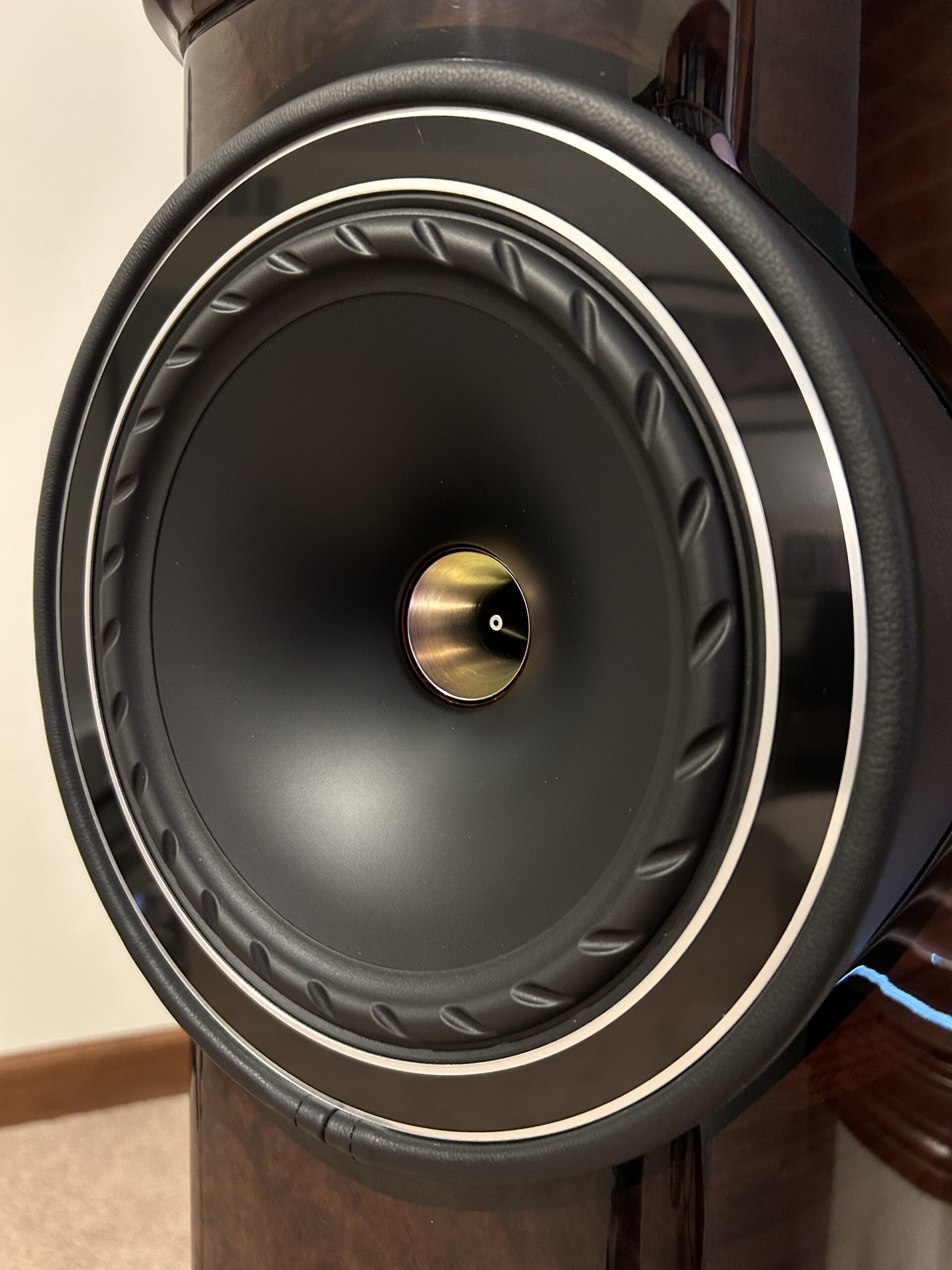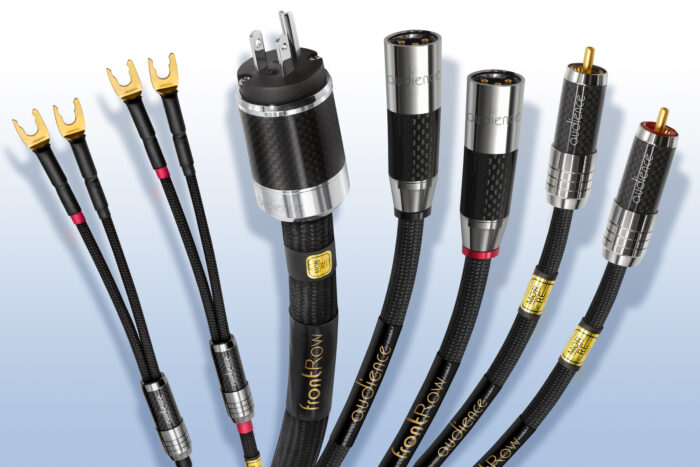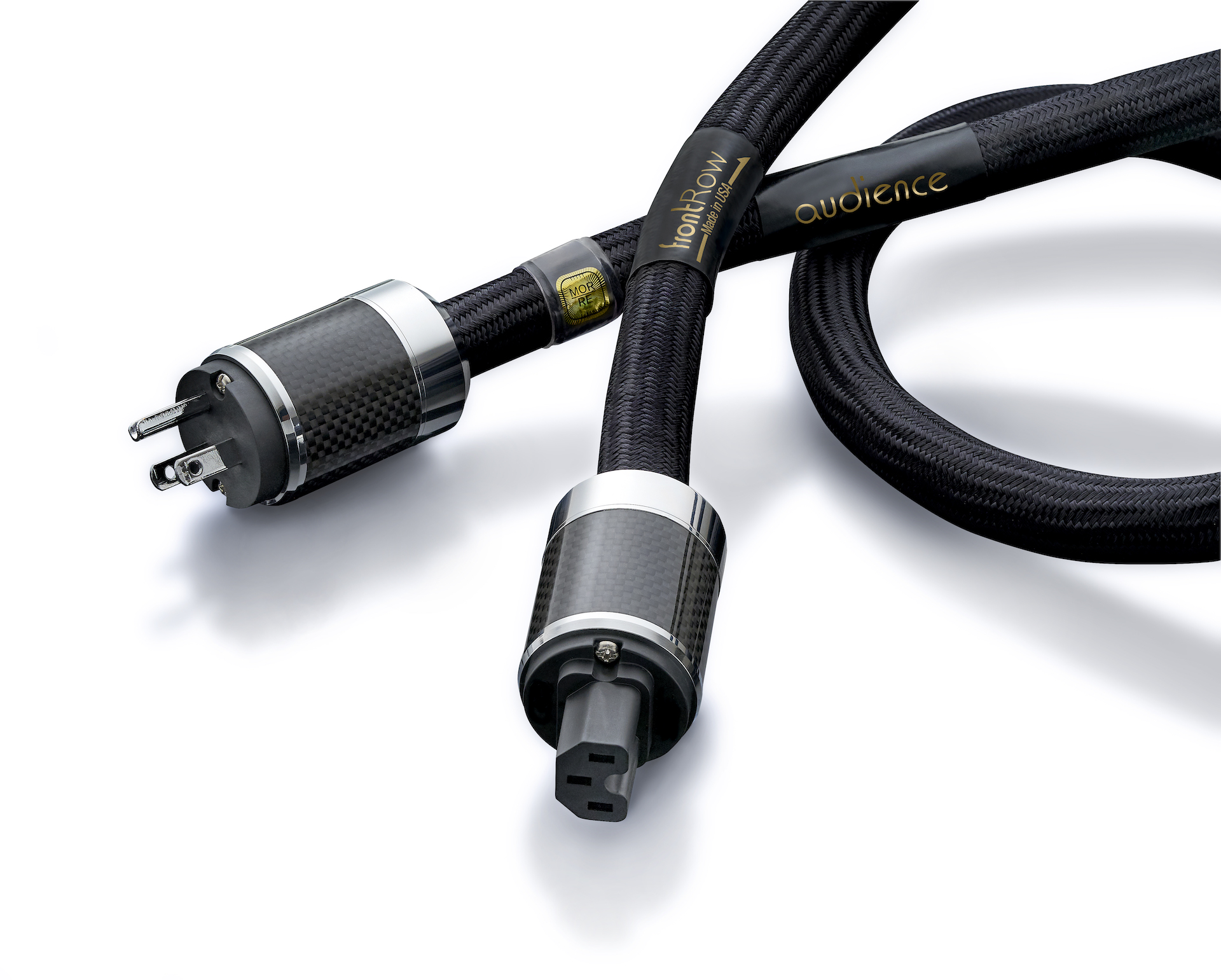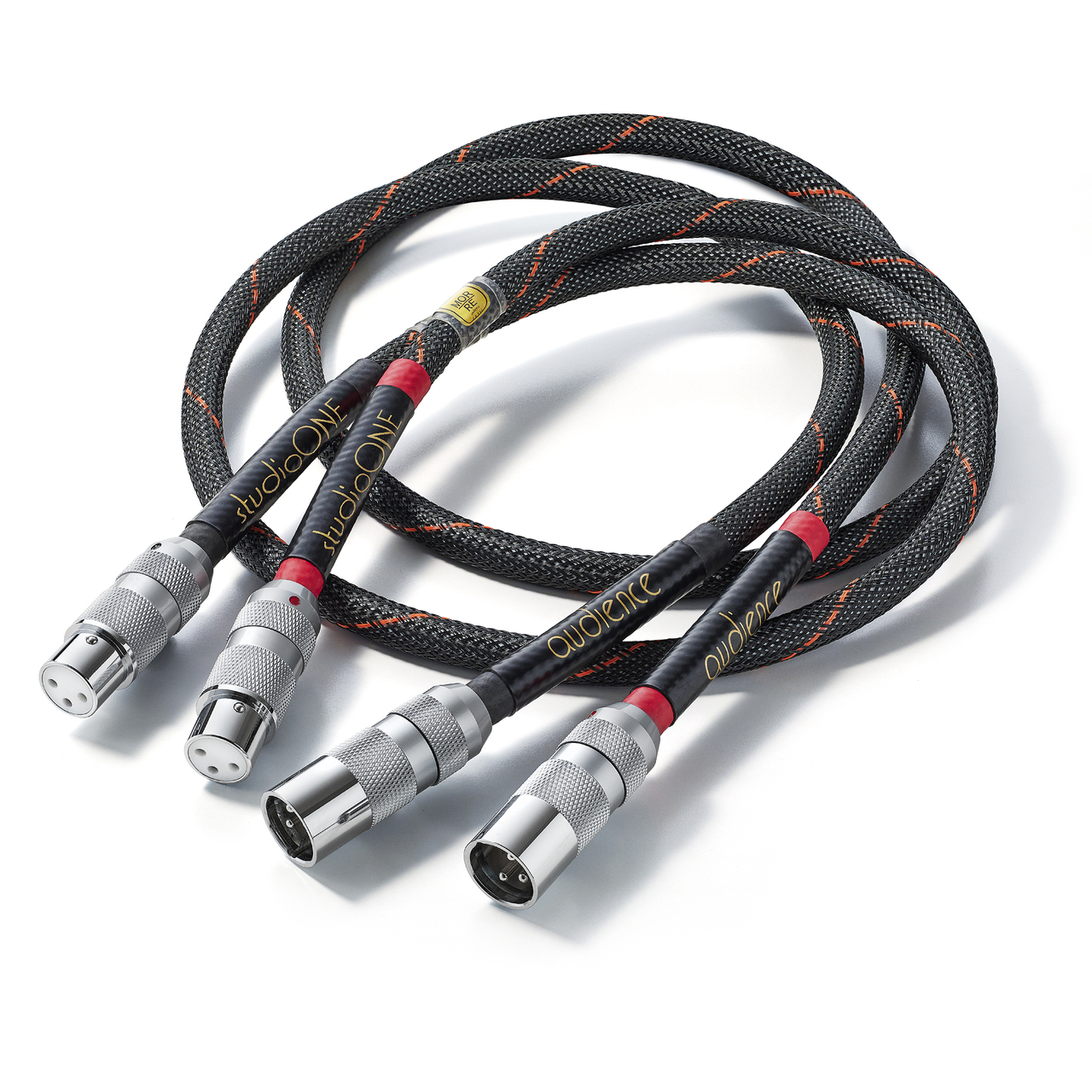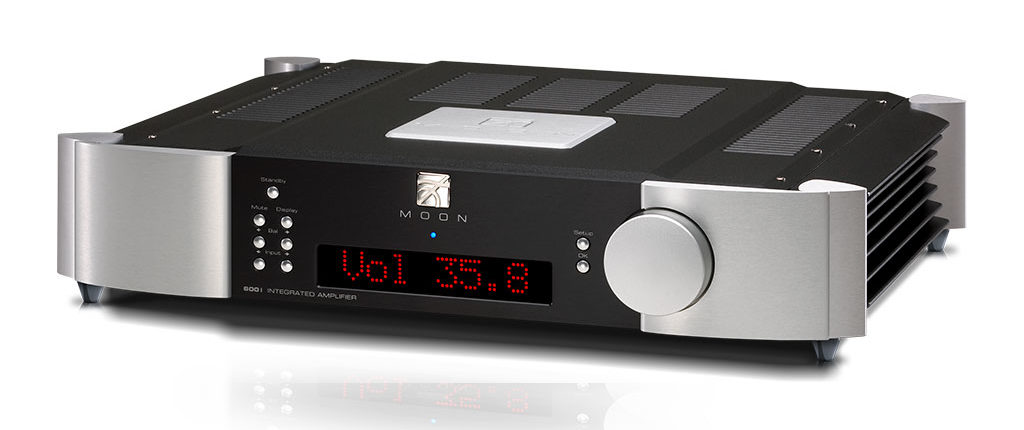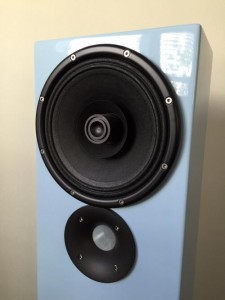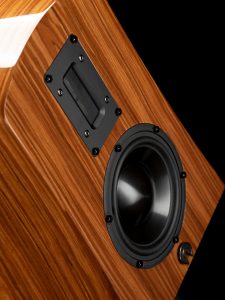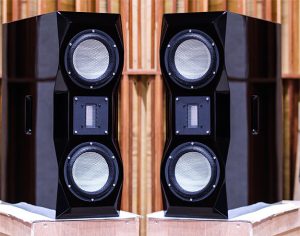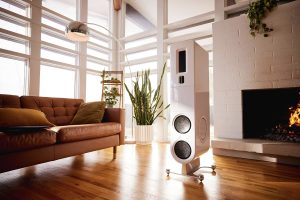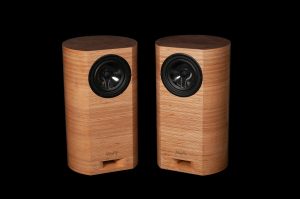German loudspeaker manufacturer Audio Physic has a long and storied history of innovation. From the employment of side-mounted woofers and narrow baffles featured throughout its loudspeaker lines, to coaxial, string-suspended midrange / tweeter drivers utilized in the legacy Kronos and Caldera II models, and even to the promotion of radical nearfield-based placement recommendations, Audio Physic has continually pushed the design envelope. High-end audio designers can find inspiration in the unlikeliest of places, and in the case of Manfred Diestertich, chief designer for Audio Physic, inspiration came from his customers and dealer network. Arguably the progenitor of, and certainly a long adherent to side-firing woofers and the myriad of sonic advantages associated with such a configuration, Audio Physic learned that some customers and dealers took issue with the conspicuous grill cloths on the speakers' cabinet sides. Additionally, customers began requesting alternative finishes to the wood veneers historically offered. Audio Physic has always prided itself on its ability to design from a blank slate, so Diestertich rolled up his sleeves and took a fresh look at loudspeaker-enclosure form and function.
Starting with the cabinet finishes, Diesterich introduced glass panels that could be bonded to the underlying enclosure walls via an elastic damping layer. Ostensibly responding to an appeal for improved aesthetics, Diestertich was pleasantly surprised by the concomitant sonic improvement. The glass panels served to minimize and randomize enclosure-borne resonances, resulting in a quieter cabinet. Moving on to the issue of exposed woofers and grill cloths on the cabinet sides, Diestertich formulated an ingenious solution, whereby a woofer is fully ensconced within the enclosure, allowing for contiguous unbroken side walls. As with the glass panels, the internally-mounted woofers resulted in serendipitous sonic benefits. Audio Physic first introduced these innovations in the Classic line of loudspeakers, but it was perhaps inevitable that the manufacturer would trickle these advancements up to the premier High End line.
In the Audio Physic lineup, the Avanti sits below the Codex and above the Tempo plus. A tall, slim floorstander, the Avanti is a three-way loudspeaker incorporating Audio Physic's most advanced technologies. Diestertich goes to extraordinary lengths to eliminate cabinet and driver-induced resonances, and in the Avanti, he has taken this philosophy to an unprecedented level.
Partnering with Wavecor of China, Audio Physic has developed proprietary transducers unique to the brand. The Avanti employs the most advanced versions of these drivers and implements them in a unique configuration. Starting with the woofer, the Avanti employs an 8" air-dried paper cone, with a 150Hz crossover point. What makes the woofer special is the manner in which it's mounted, inside its own box concealed within the larger cabinet enclosure. Bass frequencies generated by the woofer exit the cabinet via a down-firing opening in the bottom, and a rectangular-shaped slot at the front. Audio Physic applies a proprietary ceramic foam to damp the woofer's excursion and prevent port chuffing. The midrange driver represents Audio Physic's newest, third-iteration of the Hyper-Holographic Cone Midrange (HHCM). The 5.9" ceramic-coated aluminum cone incorporates a dual-basket design that utilizes aluminum for heat dissipation and plastic for internal damping. The HHCM also makes use of Audio Physic's Active Cone Damping technology to further damp the the metal-cone's tendency to ring at high frequencies by utilizing a U-shaped ring integrated into the surround of the rim of the driver. As with the other loudspeakers in the German manufacturer's higher-end lineup, the Avanti employs the Hyper-Holographic Cone Tweeter (HHCT), also in its most recent third iteration. As an alternative to the ubiquitous dome tweeter used by competing loudspeaker manufacturers, Audio Physic touts the 1.75" cone's superior dispersion characteristics at the point of its 2.8kHz crossover to the HHCM, as well as comparatively reduced diaphragm ringing and breakup.
The Avanti's cabinet, too, benefits from Audio Physic's forward-thinking design philosophies. Internally, the enclosure is heavily braced to reduce vibration, with additional resonance control employed via the strategic placement of open-cell ceramic foam on the inside walls. The crossover utilizes high-quality components and is separated across three boards located close to each driver for preserving signal integrity. The cabinet is sloped back at a seven-degree angle to time-align the HHCM and HHCT drivers. The HHCM and HHCT are mechanically decoupled from the cabinet via neoprene dowels, as is the Vibration Control Terminal (VCT) on the rear that houses the WBT Next-Gen single-wire five-way binding posts. The Avanti is equipped with aluminum outriggers attached to the bottom of the cabinet. These outriggers provide stability to the Avanti's tall, narrow cabinet, and afford the ability to level the speaker via adjustable floor spikes. The Avanti comes with two different baffle options for the midrange and tweeter drivers, an open construct, as well as a cloth-covered one, allowing the user to select the style that best matches his or her aesthetic.
Specifications for the Avanti include a height of 42.8 inches, a width of 6.7 inches and a depth of 15.4 inches. The outriggers mandate a a necessary placement space of 11.8" width by 15.7" depth. Weight is 53 pounds for the standard wood finishes and 64 pounds for the optional glass finishes. Frequency response is specified as 31Hz - 40kHz. Nominal impedance is four ohms, and the sensitivity is stated at 88dB, presumably measured at one meter with a 2.83 volt input. Standard finishes for the Avanti include Cherry, Walnut, Ebony and Black Ebony High Gloss, Rosewood High Gloss, and several glass-finish colors available at additional cost. My Avanti review samples came finished in glass black and were both luxurious and stylish.
The Avanti loudspeakers arrived from VANA Ltd., the US distributor for Audio Physic, in separate sturdy cardboard boxes strapped to a pallet. Despite their weight, unpacking the loudspeakers was a relatively simple task. Each Avanti includes, in addition to the instruction manual and outrigger feet, a set of floor spikes, along with tools for adjusting. Accompanying each matched pair of loudspeakers is a certificate containing signatures of the Audio Physic team members responsible for end-to-end assembly and final quality-control testing. An Audio Physic-branded bubble level is also provided to assist with leveling each speaker on uneven floors.
During the course of the review period, my system comprised AVM A3.2, Clones Audio 25iR and conrad-johnson CA150 integrated amplifiers, Simaudio MOON CD5.3 and Marantz SA-10 disc players, Kimber Select KS-1036 interconnects and Monocle X speaker cables, Audience aR2p-TO power conditioner and powerChord 'e' power cords. Components resided on the Solidsteel 6.2 Audio Table, and room treatments were provided by GIK Acoustics.
The Audio Physic Avanti is capable of outstanding bass reach and authority, but, unlike many loudspeakers with full-range performance, proved itself to be relatively unfussy with respect to placement. Perhaps owing to its ingenious internally-mounted woofer configuration, the Avanti could be placed close to rear or side walls without the bass becoming overblown or boomy. This flexibility with respect to placement afforded me the opportunity to, in addition to utilizing the Avantis in my smaller dedicated listening room, install them in a much larger shared living space, which requires me to place speakers closer to room boundaries.
Upon installing a new component into one's system, some aspect of musical reproduction typically jumps out early in the auditioning, be it tonality, soundstage recreation, dynamic expression, etc. With the Avanti, and perhaps for the first time in my experience as a reviewer, I listened to an entire recording, in this case, the SACD soundtrack to Close Encounters of the Third Kind (Audio Fidelity AFZ 226) by John Williams, and instead of focusing on any singular aspect of the system's sonics, I found myself wholly immersed in the musical performance. The Avanti possessed an ineffable grace and maturity that has eluded most speakers in my experience. Part of this owed to their overall tonality, which forewent flashy pyrotechnics for an an evenhanded approach that, while not short on excitement or detail when called for, never distracted from the underlying musical message.
Starting with the bass, the Avanti's internal 8" woofer played deep, reaching as low as any speaker I've encountered, and provided room-shaking output when called for. This bass reach and power only impinged upon my awareness, however, when program content mandated it. Listening to Genesis' "Supper's Ready" from their Foxtrot CD (Atlantic 82674-2), I was bowled over by the authority of Mike Rutherford's bass pedals during the "Apocalypse in 9/8 (Co-starring the Delicious Talents of Gabbie Ratchet)" section. And Jaco Pastorius' fretless bass playing on "Teen Town" from Weather Report's Heavy Weather SACD (Audio Fidelity AFZ 258) was supple and fluid.
At the other end of the spectrum, the HHCT was airy and resolving and yet nuanced. After weeks of listening to the Avantis, I couldn't, try as I might, ascribe any sonic signature to the these amazing cone tweeters. The HHCT was the consummate open window to upstream components and recordings. Whether it was the myriad of percussion instruments played by Paulinho Da Costa in "Papa Legba" from the Talking Heads True Stories release (Sire 9 25512-2), or the intricate cymbal work by Michael Giles on "Pictures of a City" from King Crimson's In the Wake of Poseideon CD (Virgin CDVKCX2), there was a sense of dynamic effortlessness, coupled with a purity and sweetness of tone, that set the HHCT apart from other tweeters I've heard.
This marvelous marriage of resolution and nuance extended down into the Avanti's midband. Seamlessly blended with the tweeter, the HHCM proved itself to be just as remarkable in its ability to reveal inner layers of detail. Vocals, such as Tori Amos' rendering of "Silent All These Years," from her Little Earthquakes debut release (Atlantic 7 82358-2), were reproduced with tactility and with a verisimilitude that bordered on the uncanny. There was a dimensional solidity and a tonal realism that I've seldom experienced in any loudspeaker, regardless of cost. Paul McCandless' oboe and Ralph Towner's piano on "Vessel" from Oregon's 1979 Roots in the Sky CD (Discovery 71005) were in-the-room present, with a consummate amalgam of warmth, bite and micro-dynamic verve.
Like all Audio Physic designs, the Avanti utterly disappeared into a huge, enveloping soundstage. Perhaps owing to the additional reinforcement afforded by the glass panels bonded to the cabinet, the Avanti distinguished itself with imaging that, while pinpoint-precise, never steered too far into artifice. Instruments were layered with plenty of rounded bloom, and were reach-out-and-touch-them visceral within the broader soundscape.
What about downsides to the Avanti? Rated at 88dB for 2.83 volts into it nominal 4-ohm impedance, I felt that, if anything, the Avanti's sensitivity is somewhat optimistically specified. In my experience, the Avanti responds well to power and current, and while monster amps are not required, moderately-specified amplifiers should be carefully evaluated for suitability. Aesthetically, while the glass finish on my Avanti samples was elegant and attractive, it also readily showed up dust and fingerprints. Easy to clean with a soft rag and Windex (just take care to only spray the rag and not the speaker), the glass finish does require frequent maintenance to look its best.
For the past 18 months, my reference loudspeaker has been the Audio Physic Tempo plus, which I previously reviewed for Positive Feedback (see review HERE). Sharing a similar design ethos with the Avanti, the Tempo plus differs primarily in its woofer alignment—in lieu of an internally-mounted transducer, the Tempo plus employs drivers mounted on each of the cabinet sides, in a push-push configuration whose goal is to reduce driver-induced vibration. Sonically, the Avanti and Tempo plus exemplify the Audio Physic house sound—clear and detailed, with extended bass and exceptional soundstaging abilities. The Tempo plus possessed a rounder, warmer low end, with the Avanti countering with greater extension and control. The Avanti and Tempo plus were similarly nuanced and resolute in the midrange, with the Avanti evincing more perspicacity in vocal reproduction. The two Audio Physic loudspeakers differed most significantly in the treble range, despite employing the exact same HHCT. Both the Avanti and Tempo plus were airy and extended, but the Avanti did not demonstrate the Tempo plus' reticence in the mid-treble, bringing sibilants, as well as cymbals and other percussion instruments to the fore.
I was also able to compare both Audio Physic speakers to the Focal Aria 936. The Aria 936 is larger than either the Tempo plus or Avanti and contains three 6.5" flax-glass-sandwich woofers, one 6.5" flax-glass midrange and one 1" inverted aluminum-magnesium dome tweeter. Despite its greater cabinet volume and triple bass drivers, the Aria 936's bass response was not as extended as either the Avanti or Tempo plus. The Focal did have greater punch in the mid-bass, likely on account of the greater surface area across multiple drivers. The Aria had a very resolved and natural midband, but lacked just the last vestige of tactility that was the province of the Audio Physic speakers, and in particular, the Avanti. Surprisingly, given its larger size, the Aria 936, like the Avanti and Tempo plus, was a soundstaging monster, pulling a complete disappearing act, even when listened to in the nearfield. The Focal presented images closer to the listener, whereas the Avanti placed images further back in the soundstage. The Aria 936's tweeter was clean and extended, but lacked the characterless purity of the HHCT.
Sleek and modern in design, the Audio Physic Avanti is a sonic tour-de-force. Capable of true full-range performance, yet compact and easy to place, the Avanti distinguishes itself with superlative tonal accuracy, dynamic verve and soundstaging prowess. Musical and immersive, the Avanti succeeds at all levels in connecting the listener to his or her favorite recordings. While not inexpensive, the Avanti nevertheless represents a bargain when its cutting-edge technologies, beautiful appearance and world-class sound are taken into account. One could spend considerably more and get less performance. Highly recommended.
Avanti Loudspeakers
Retail: $8500 per pair in standard finishes
VANA, Ltd.




